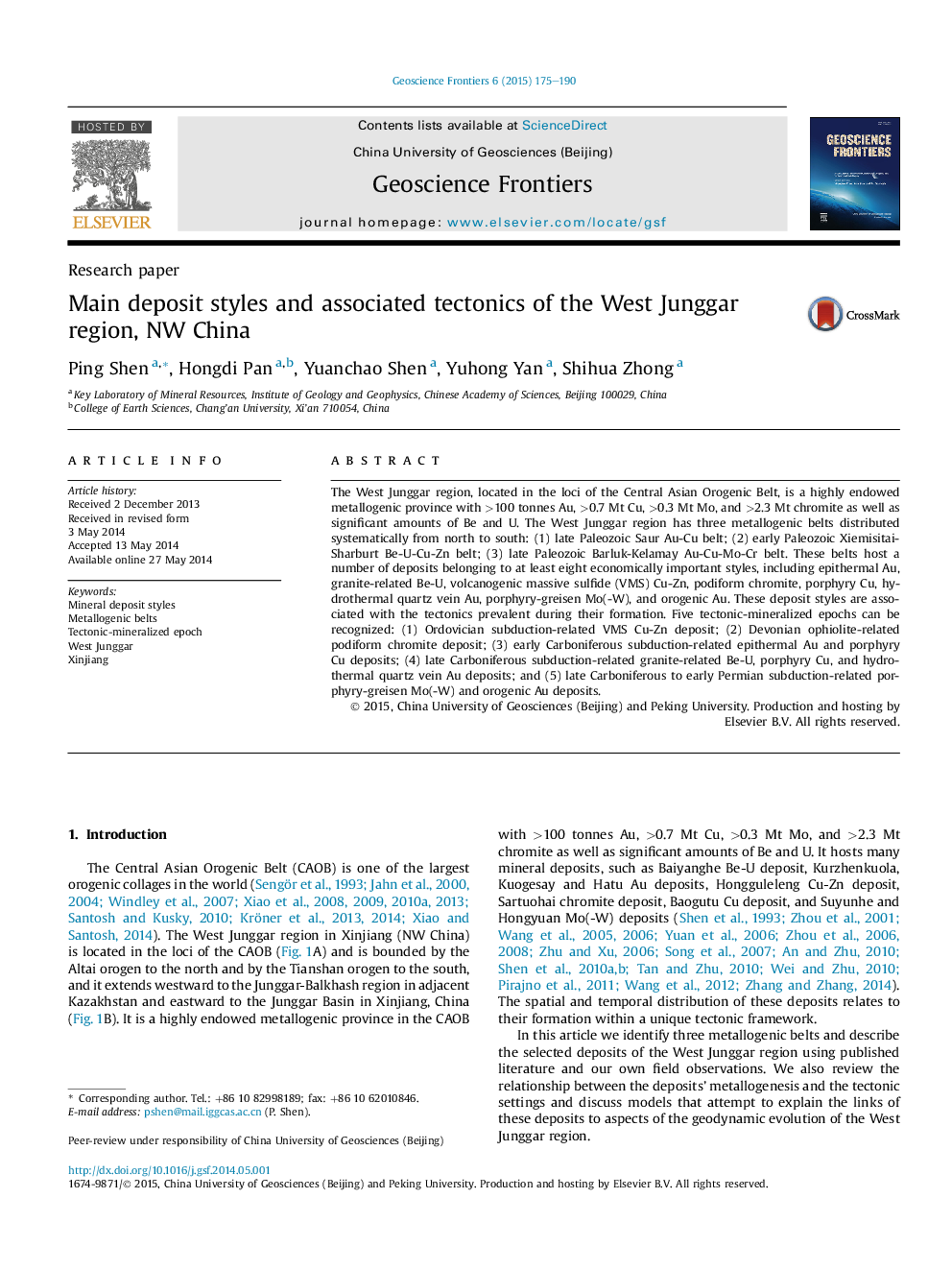| Article ID | Journal | Published Year | Pages | File Type |
|---|---|---|---|---|
| 4681630 | Geoscience Frontiers | 2015 | 16 Pages |
•Three metallogenic belts are identified in the West Junggar region.•At least eight types of mineralizations are developed in these belts.•Five tectonic epochs from Ordovician to Permian and related mineralization.
The West Junggar region, located in the loci of the Central Asian Orogenic Belt, is a highly endowed metallogenic province with >100 tonnes Au, >0.7 Mt Cu, >0.3 Mt Mo, and >2.3 Mt chromite as well as significant amounts of Be and U. The West Junggar region has three metallogenic belts distributed systematically from north to south: (1) late Paleozoic Saur Au-Cu belt; (2) early Paleozoic Xiemisitai-Sharburt Be-U-Cu-Zn belt; (3) late Paleozoic Barluk-Kelamay Au-Cu-Mo-Cr belt. These belts host a number of deposits belonging to at least eight economically important styles, including epithermal Au, granite-related Be-U, volcanogenic massive sulfide (VMS) Cu-Zn, podiform chromite, porphyry Cu, hydrothermal quartz vein Au, porphyry-greisen Mo(-W), and orogenic Au. These deposit styles are associated with the tectonics prevalent during their formation. Five tectonic-mineralized epochs can be recognized: (1) Ordovician subduction-related VMS Cu-Zn deposit; (2) Devonian ophiolite-related podiform chromite deposit; (3) early Carboniferous subduction-related epithermal Au and porphyry Cu deposits; (4) late Carboniferous subduction-related granite-related Be-U, porphyry Cu, and hydrothermal quartz vein Au deposits; and (5) late Carboniferous to early Permian subduction-related porphyry-greisen Mo(-W) and orogenic Au deposits.
Graphical abstractFigure optionsDownload full-size imageDownload as PowerPoint slide
